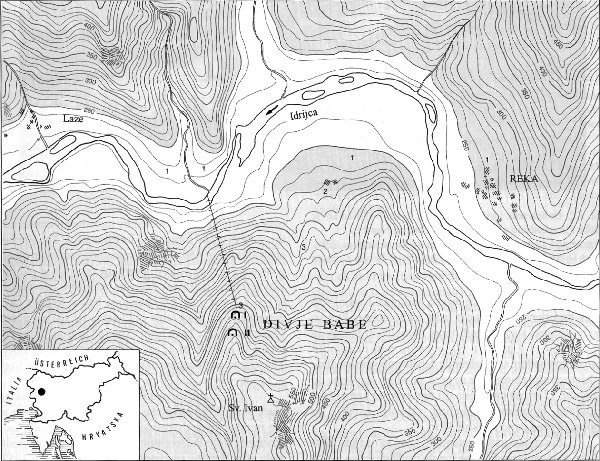 Institute of Archaeology Institute of Archaeology |
[Slovenian] |
| Home | Members | Programme | Projects | Laboratory |
| Database | Publications | Library | Links | Archive |
|
Basic information | Recent publications RESEARCH
Excavations of the Upper Pleistocene cave site of Divje babe I yielded several thousand cave bear metapodials. These hefty, compact bones are relatively numerous at the many Upper Pleistocene sites and are therefore suitable for detailed morphometric analyses. By performing the Principal Component Analysis (PCA) on standardized metric data (eight measurements per specimen were taken) it was possible to differentiate the metapodials according to gender. The number of metacarpals and metatarsals of both sexes was roughly equal in the Early Glacial (= OIS 5a-5d) layers, while the Interpleniglacial (= OIS 3) material demonstrates an approximate two thirds majority of male specimens. The differences in the gender ratios between both chronologically defined samples were explained with an increase in inter-sexual competition for lairs during the OIS 3, due to the more severe climatic conditions.
The possibility of there being two size-groups of metapodials, neither of them being related to sexual dimorphism, but rather to the immigration of a considerably larger cave bear species (i.e. U. ingressus) was effectively rejected in the case of Divje babe I because no statistically significant differences in the morphology between the larger (i.e. male-ascribed) and smaller (i.e. female-ascribed) specimens were found. The slight intra-sexual size difference between metacarpals from the OIS 5a-5d and OIS 3 was ascribed to bears from the OIS 3 as being larger due to the harsher and longer-lasting winters. Relevant publications
|

